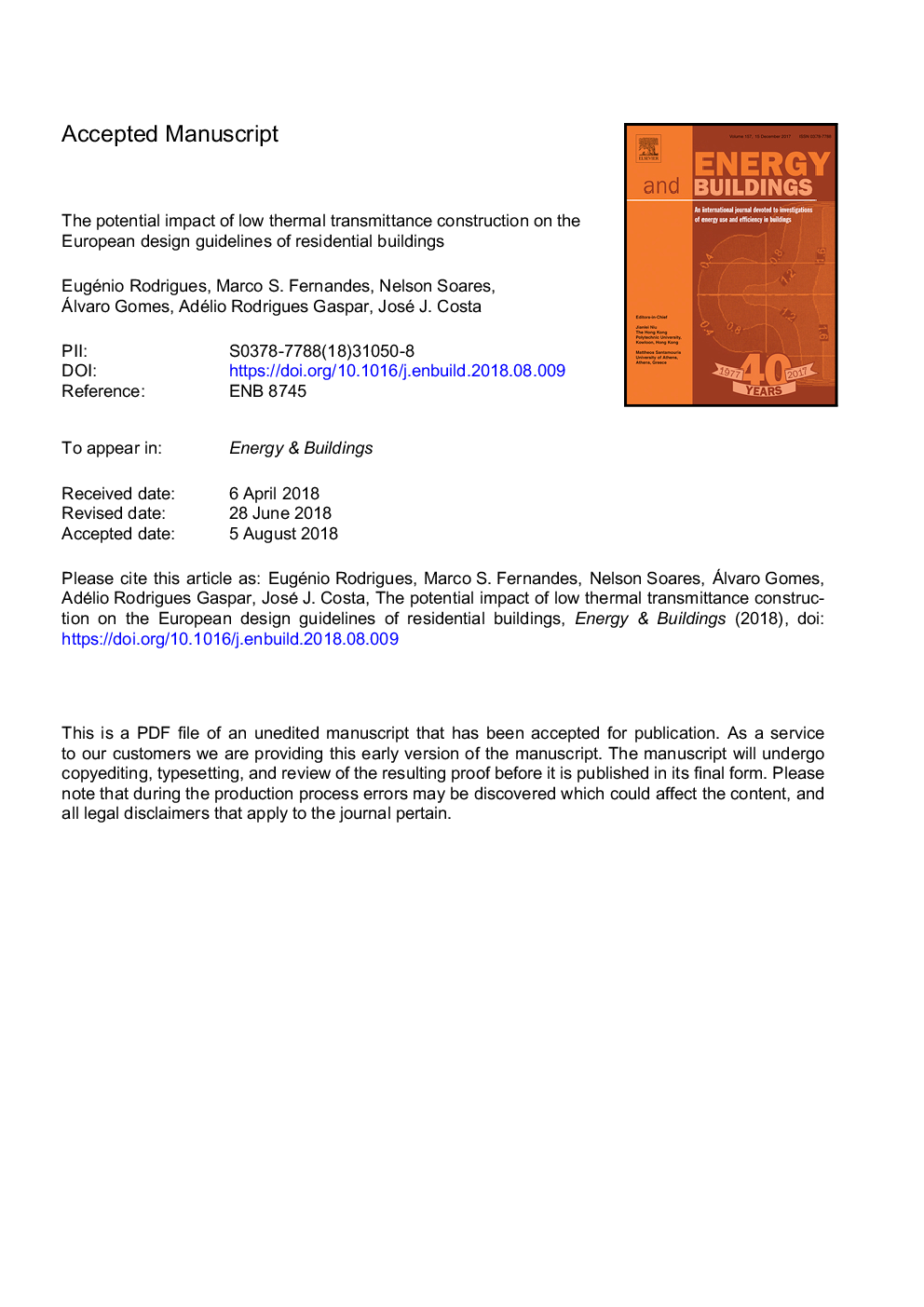| Article ID | Journal | Published Year | Pages | File Type |
|---|---|---|---|---|
| 11030182 | Energy and Buildings | 2018 | 26 Pages |
Abstract
European countries impose regulations for low thermal transmittance envelopes to improve the buildings' energy efficiency. However, in scientific literature, evidences are surfacing that such low U-values are affecting the validity of traditional design guidelines. The purpose of this paper is to analyze the implications of lowering the envelope U-values. To achieve this, 96,000 residential buildings were generated, with random geometries and U-values, and their energy consumption evaluated for eight European locations. The buildings were grouped according to the envelope elements' thermal transmittance and the results statistically analyzed. For each group, six geometry-based indexes were correlated with the energy performance. As U-values decrease, the performance variation amplitude was found to reduce, making the geometry less important. However, in warm/moderate climates, low U-values tend to actually increase the energy consumption and also rise the performance variation, meaning that geometry regains importance. In this case, instead of helping reducing the heating demands, solar exposed windows and compact geometries raise the energy consumption. It is concluded that, for each climate location, there is an ideal U-value range for which the energy demand is low and the geometry effect becomes less significant, thus freeing designers to further explore building forms and window designs.
Related Topics
Physical Sciences and Engineering
Energy
Renewable Energy, Sustainability and the Environment
Authors
Eugénio Rodrigues, Marco S. Fernandes, Nelson Soares, Álvaro Gomes, Adélio Rodrigues Gaspar, José J. Costa,
